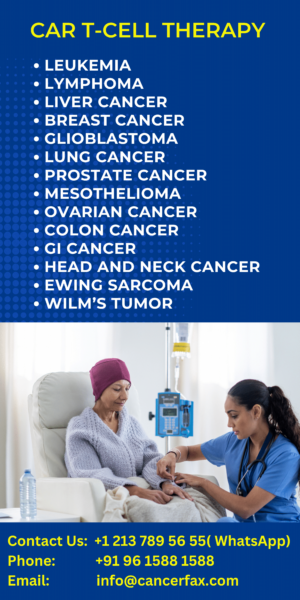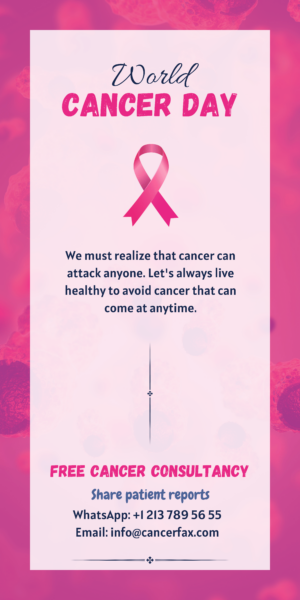Acute myeloid leukemia (AML)
What is acute myeloid leukemia (AML)?
What is acute myeloid leukaemia?
A type of cancer that affects the blood and bone marrow is acute myeloid leukaemia (AML). Not a single disease is AML. It is the name given to a leukaemia group that forms in the bone marrow in the myeloid cell line. Red blood cells, platelets and all white blood cells, except lymphocytes, are myeloid cells.
An overproduction of immature white blood cells called myeloblasts or leukaemic blasts, characterizes AML. The bone marrow is crowded with these cells, stopping it from producing regular blood cells. They can also spill out and circulate through the body into the bloodstream. They are unable to act properly to prevent or combat infection because of their immaturity. Anaemia, fast bleeding, and/or bruising may be caused by insufficient numbers of red cells and platelets formed by the marrow.
Acute myeloid leukaemia is sometimes called acute myelocytic, myelogenous or granulocytic leukaemia.
You may have heard more about this type of blood cancer recently after professional golfer Jarrod Lyle lost his hard-fought battle with the disease.
Which type of AML do I have?
Based on the presence of the leukaemic cells under the microscope, AML is categorized into eight distinct subtypes. Each subtype provides data on the type of blood cell involved and the point in the bone marrow at which it stopped maturing properly. This is known as the method of classification for French-American-British (FAB).
In order to more reliably classify AML, the new World Health Organisation’s classification system for AML uses additional knowledge derived from more advanced laboratory methods, such as genetic studies. This information also offers more accurate information on the likely course (prognosis) of and the best way to handle, a specific subtype of AML.
Some subtypes of AML are associated with particular symptoms, such as the association of acute promyelocytic leukaemia (APML or M3) with bleeding and blood clotting defects.
What is the prognosis of AML?
The genetic structure of leukaemic cells is the most significant factor in determining the prognosis for AML. A more favorable prognosis is associated with some cytogenetic modifications than others. This means that they are more likely, and may even be healed, to respond well to treatment.
Favorable cytogenetic changes include: chromosome 8 to 21 t(8;21) translocation, chromosome 16 inversion; inv(16) and chromosome 15 to 17 translocation; t (15;17). This final shift is observed in acute promyelocytic leukaemia of the AML subtype (APML or M3). APML is handled differently and typically has the highest overall prognosis compared to other forms of AML.
The average or intermediate prognosis is associated with other cytogenetic changes, while others are associated with weak or unfavorable prognosis. It is important to remember that neither ‘good’ nor ‘bad-risk’ cytogenetic modifications are present in most cases of AML. People with ‘natural’ cytogenetics are also considered to have an average prognosis.
Causes
Among adults, AML is one of the most common forms of leukemia.
In men, AML is more common than in women.
The bone marrow helps the body combat diseases and creates other elements of the blood. Within their bone marrow, people with AML have many abnormal immature cells. The cells expand and replace healthy blood cells very rapidly. As a consequence, AML individuals are more likely to have infections. When the numbers of healthy blood cells drop, they also have an increased chance of bleeding.
A health care professional will not tell you, most of the time, what triggered AML. The following things can however, lead to some kinds of leukemia, like AML:
- Blood disorders, including polycythemia vera, essential thrombocythemia, and myelodysplasia
- Certain chemicals (for example, benzene)
- Certain chemotherapy drugs, including etoposide and drugs known as alkylating agents
- Exposure to certain chemicals and harmful substances
- Radiation
- Weak immune system due to an organ transplant
Problems with your genes may also cause development of AML.
Most cases of AML have no known cause. There are no clear causes (risk factors) why the disease has established among most people who have AML. You can’t catch someone else’s AML.
Researchers have identified potential risk factors, including:
- Repeated exposure to the chemical benzene, which damages the DNA of normal marrow cells. Half of the overall national personal exposure to benzene comes from cigarette smoke, according to the Agency for Toxic Substances and Disease Registry, while petroleum products contribute to the majority of benzene in the atmosphere. Benzene is still present in many manufacturing conditions, but the tight control of its use has limited exposure to benzene in the workplace.
- Certain genetic disorders such as Down syndrome, neurofibromatosis type 1, Bloom syndrome, Trisomy 8, Fanconi anemia, Klinefelter syndrome, Wiskott-Aldrich syndrome, Kostmann syndrome and Shwachman-Diamond syndrome.
- Past chemotherapy or radiation treatments for other cancers.
- Progression of other blood cancers or disorders, polycythemia vera, primary myelofibrosis, essential thrombocythemia and myelodysplastic syndromes (MDS).
Diagnosis of AML
The most common signs of acute myeloid leukemia (AML) include:
- A fever
- Shortness of breath
- Unusual bruising or bleeding
- Feeling very tired and weak
- Getting sick from infections more easily than normal.
If you have any of these symptoms, see your doctor.
You may be referred to an oncologist or hematologist by your family doctor — physicians who diagnose and treat leukemia. In order to find out whether you have AML and what sort you have the doctor can do tests. The more your doctor learns about your cancer, the higher the likelihood of effective treatment.
Physical Exam
Your physician will ask questions about your health during your appointment. Your doctor will examine the body for signs of cancer during the test, such as bruises or patches of blood under the skin.
Tests for AML
AML affects immature blood cells called stem cells that grow into white blood cells, red blood cells, and platelets. These blood cells are made in your bone marrow — the spongy material inside your bones. In AML, the stem cells are abnormal and can’t grow into healthy blood cells.
These tests look for immature or abnormal cells in your blood and bone marrow:
- Blood tests
- Bone marrow tests
- Lumbar puncture
- Imaging tests
- Gene tests
Blood Tests
During a blood test, your doctor uses a needle to take a sample of blood from a vein in your arm. Doctors use different types of blood tests to diagnose AML:
- Complete blood count (CBC). This test checks how many white blood cells, red blood cells, and platelets you have. With AML, you may have more white blood cells and fewer red blood cells and platelets than normal.
- Peripheral blood smear. In this test, a sample of your blood is examined under a microscope. It checks the number, shape, and size of white blood cells, and looks for immature white blood cells called blasts.
Bone Marrow Test
You will also need a bone marrow examination to confirm that you have AML. A very small bone marrow sample would be taken by a doctor. Then, to see if defective (cancer) cells are present, another doctor may look at the cells under a microscope. If 20 percent or more of the blood cells in the bone marrow are immature, AML can be diagnosed.
Treatment of AML
Acute myeloid leukemia (AML) forces the bone marrow to produce vast numbers of blood cells called blast cells that are rare and underdeveloped. These cells crowd out mature red blood cells, white blood cells and platelets that are stable. The aim of AML therapies is to kill dysfunctional immature blood cells in the blood and bone marrow. The goal is to place you in full remission, meaning that you don’t have any blood markers or cancer signs.
Several different treatments work on AML:
- Chemotherapy
- Stem cell transplant
- Radiation
- Targeted therapy
Your treatment will have two phases:
Phase 1: Remission induction therapy.
To kill as many leukemia blast cells as possible, you’ll get heavy doses of chemotherapy. Targeted treatment medications still exist.
Your bone marrow should start making healthy blood cells four to 6 weeks after treatment. Your doctor will take a sample of your bone marrow and do tests to see whether there are any leukemia cells left in your blood. If no symptoms of leukemia cells are present, doctors call this in remission.” To help you remain in remission, you will also need to go through post-remission therapy.
Phase 2: Post-remission therapy. Post-remission therapy uses more treatments to wipe out any cancer cells that might have been left behind after chemotherapy. This is called a complete remission. You have three options:
- Chemotherapy. You may get several cycles of high-dose chemotherapy once a month.
- Allogenic (from a donor) stem cell transplant
- Autologous (from yourself) stem cell transplant
Chemotherapy
In order to destroy cancer cells all over the body, chemotherapy uses powerful medicines. You get these medications by mouth, IV, or injection under your skin.
If the cancer has spread, the fluid around the brain and spinal cord will get chemotherapy. This is what doctors call intra-thecal chemotherapy.
Side effects: Chemotherapy works by destroying cells in your body that separate rapidly. Cancer cells split rapidly, but so do other cells, such as those in your immune system, the lining of your mouth and intestines, and the follicles of your hair. You may have side effects like these as chemotherapy harms these healthy cells :
- Nausea and vomiting
- Hair loss
- Mouth sores
- Fatigue
- Loss of appetite
- Diarrhea and constipation
- Easy bruising and bleeding
- Increased risk for infections
When the treatment ends, most of these side effects should go down. Your doctor can give you medication and other treatments to help manage the side effects of chemotherapy.
- Comments Closed
- September 2nd, 2020









Privacy Overview